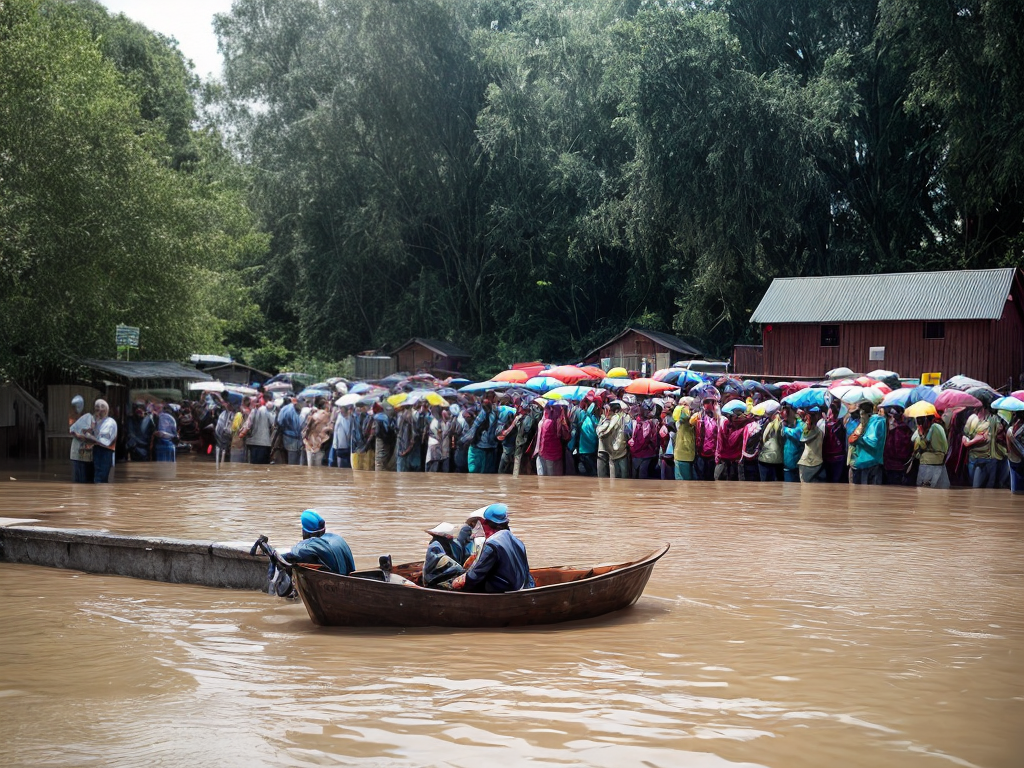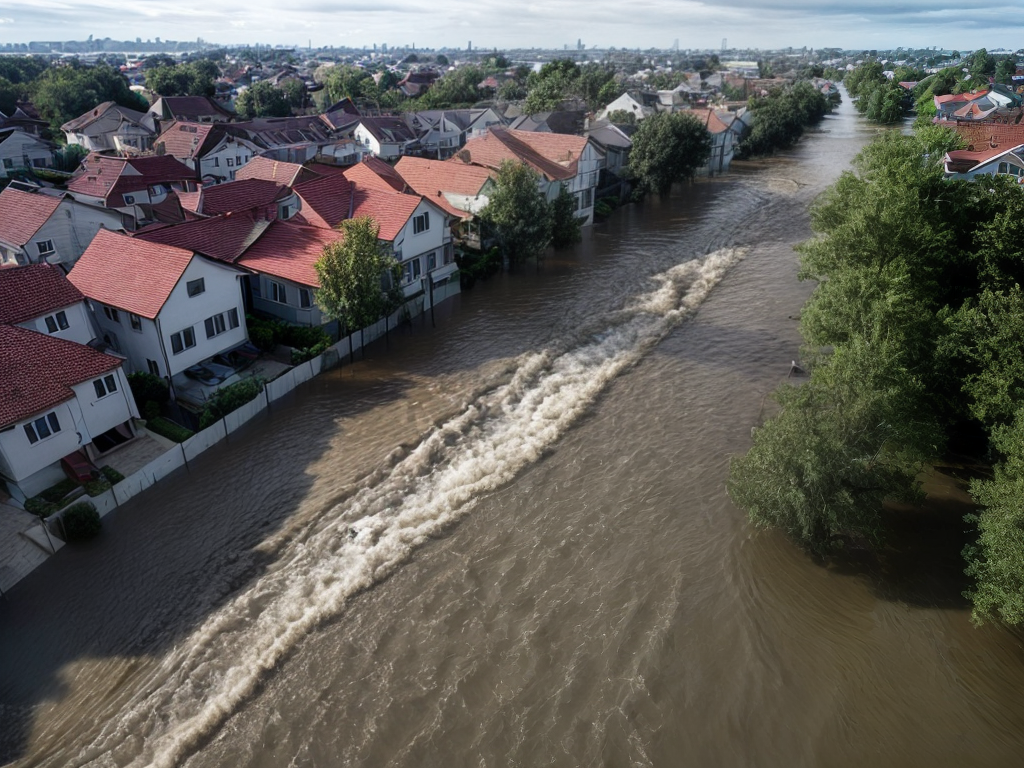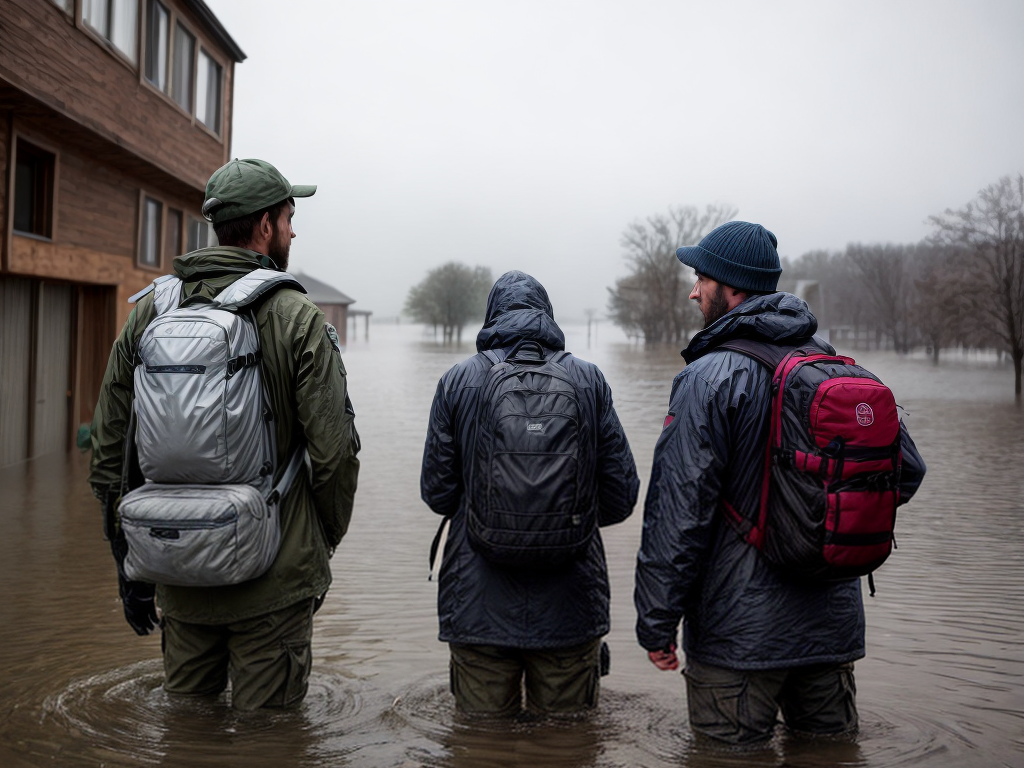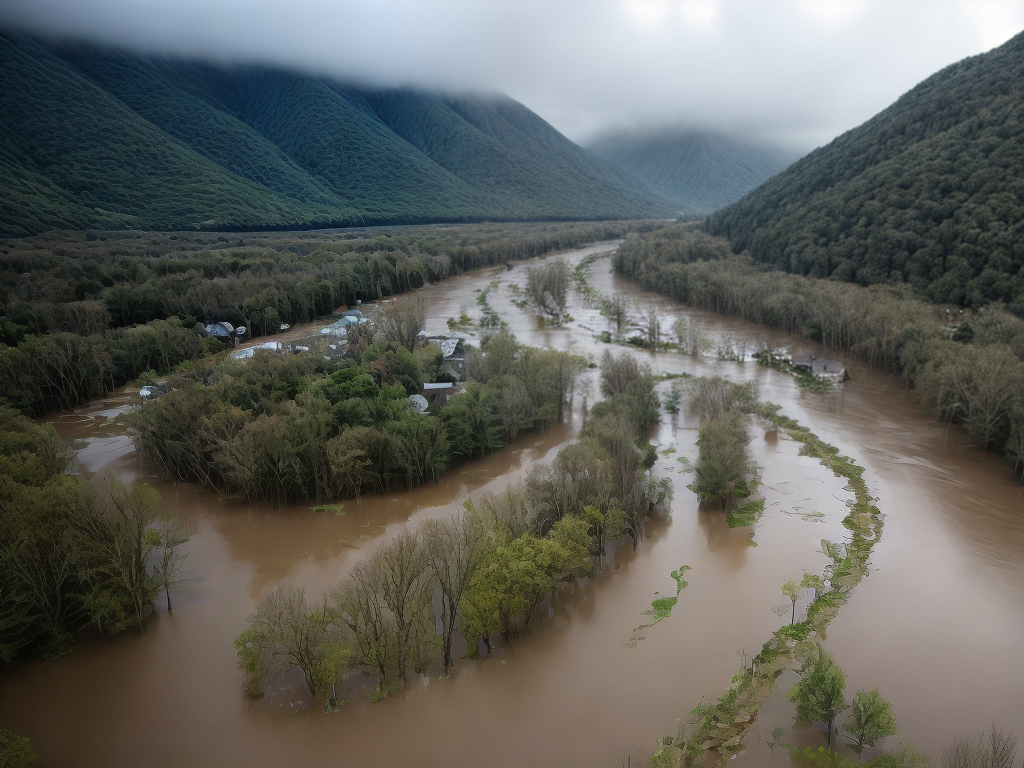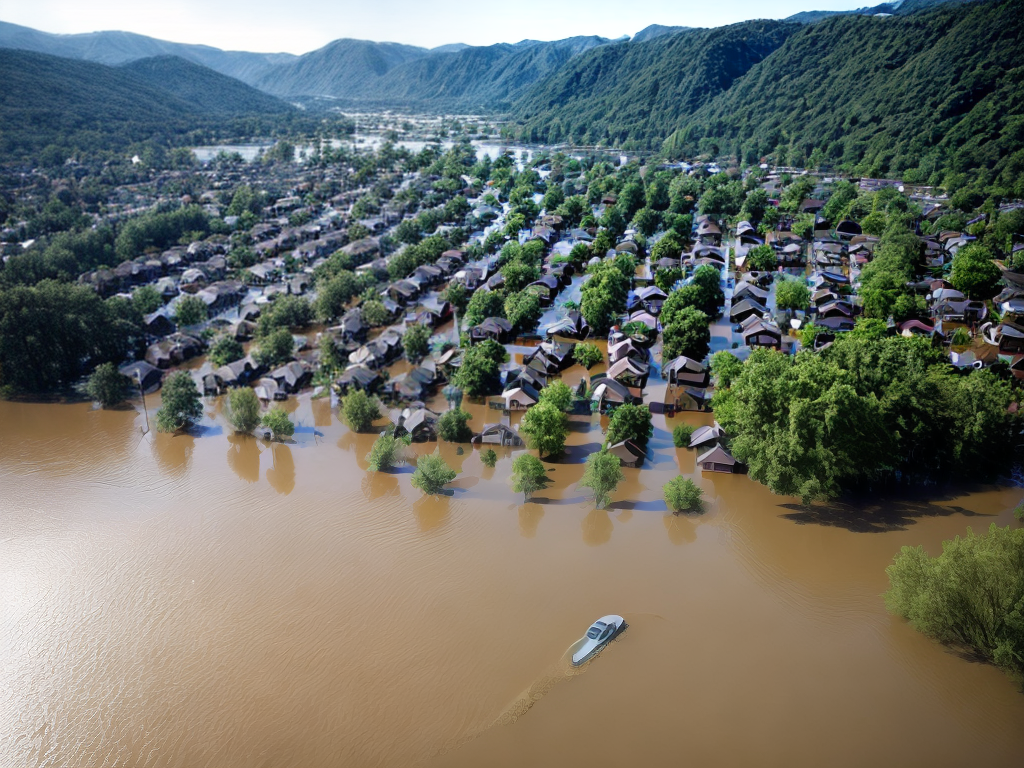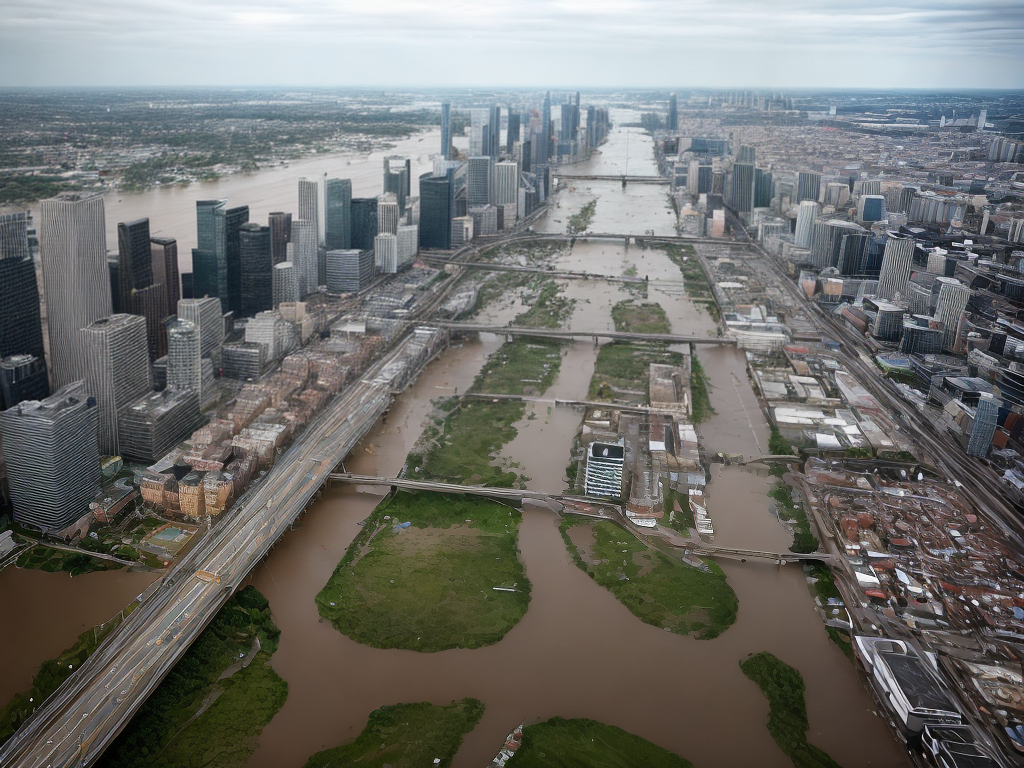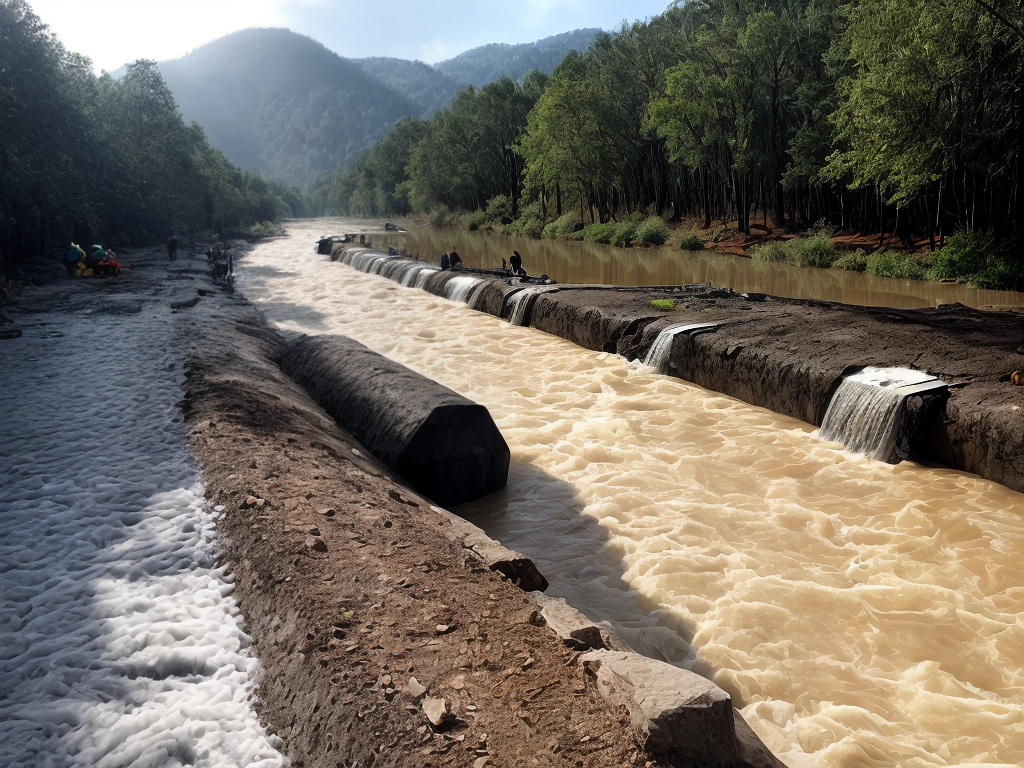
In the battle against flooding, the power of local knowledge stands in stark contrast to the unpredictability of nature. How can the insights and experiences of those who call a place home contribute to effective flood control? This is a question that has captured the attention of researchers, policymakers, and communities alike. As we explore the role of local knowledge in mitigating the devastating impacts of floods, we find that it goes far beyond mere anecdotal evidence. From understanding the intricate details of the local landscape to learning from historical experiences, local knowledge holds the key to building resilient communities. But how exactly does it shape flood control strategies? Let’s dive into this fascinating topic.
Key Takeaways
- Local knowledge and traditional flood control methods play a crucial role in effective flood control strategies.
- Incorporating indigenous knowledge and practices into flood control strategies can enhance their effectiveness.
- Combining traditional methods with modern technological advancements can lead to innovative and efficient flood control approaches.
- Developing customized flood control strategies based on community input and local landscape characteristics can improve the overall effectiveness of flood control measures.
The Importance of Local Knowledge
Local knowledge plays a pivotal role in effectively managing and mitigating the impact of floods. Understanding local culture and traditional flood control methods is essential for developing innovative solutions to address the challenges posed by flooding.
When it comes to flood control, every region has its unique characteristics and cultural practices that have been passed down through generations. By understanding the local culture, we can tap into the collective wisdom and experiences of the community. This knowledge can guide us in designing flood control measures that are not only effective but also socially and culturally acceptable.
Traditional flood control methods have evolved over time and have proven to be successful in many areas. These methods draw upon the indigenous knowledge and practices of the local communities, taking into account the natural topography and hydrological patterns of the region. By incorporating these traditional methods into our flood control strategies, we can enhance our ability to manage floods more efficiently.
Innovation lies in combining the traditional knowledge with modern technological advancements. By integrating traditional flood control methods with innovative engineering techniques, we can develop hybrid approaches that are more effective and sustainable. For example, using indigenous plant species that are adapted to local conditions can help stabilize riverbanks and reduce erosion.
Furthermore, local knowledge can also help us identify vulnerable areas and anticipate potential flood risks. By engaging with the community, we can gather valuable information about flood patterns, historical events, and local expertise. This collaborative approach enables us to develop customized flood control strategies that are tailored to the specific needs of each community.
Understanding the Local Landscape
Let’s talk about the importance of understanding the local landscape when it comes to effective flood control. One key aspect is topographic mapping, which allows us to identify areas prone to flooding and develop appropriate mitigation measures. Additionally, understanding local hydrological patterns is crucial in predicting how water will flow and accumulate during heavy rainfall, enabling us to implement targeted flood prevention strategies. By acknowledging these factors, we can harness the power of local knowledge to better protect communities from the devastating effects of flooding.
Topographic Mapping
We can better understand the local landscape by utilizing topographic mapping. Topographic analysis, combined with floodplain mapping, provides valuable insights into the terrain and helps us develop effective flood control measures. By analyzing the elevation, slope, and contours of the land, we can identify areas prone to flooding and design appropriate flood control structures. Topographic mapping also enables us to assess the flow patterns of water, identify potential bottlenecks, and determine the best locations for diversion channels or retention ponds. This innovative approach allows us to create a comprehensive flood control strategy that takes into account the unique characteristics of the local landscape. By harnessing the power of topographic mapping, we can develop more efficient and sustainable solutions to protect our communities from devastating floods.
Local Hydrological Patterns
After analyzing the terrain through topographic mapping, we can now delve into understanding the local landscape by examining the hydrological patterns in the area. By studying the local streamflow and river morphology, we can gain valuable insights that contribute to effective flood control strategies. Here are three important aspects to consider:
- Flow patterns: Understanding how water moves through the landscape is crucial for predicting flood behavior and identifying vulnerable areas. By analyzing the local streamflow, we can determine the velocity, volume, and direction of water movement during different weather conditions.
- Channel characteristics: River morphology plays a significant role in flood control. Examining the shape, width, and depth of the river channel helps us understand how water is conveyed and stored, guiding us in implementing targeted measures to mitigate flooding risks.
- Natural and man-made features: Identifying natural features like floodplains, wetlands, and barriers, as well as man-made structures such as dams or levees, enables us to assess their impact on flood control and identify potential areas for improvement or restoration.
Understanding the local hydrological patterns empowers us to develop innovative flood control strategies that are tailored to the specific needs of the area, maximizing effectiveness and minimizing damage.
Weather Patterns and Flood Risks
When it comes to flood control, understanding weather patterns is crucial. By analyzing climate data, we can identify patterns that contribute to flooding risks in specific areas. Additionally, studying local flood history provides valuable insights into the frequency and severity of past floods, helping us anticipate future risks. Lastly, rainfall plays a significant role in flood risks, as heavy or prolonged rain can quickly overwhelm drainage systems and cause water levels to rise rapidly.
Climate and Flooding
Understanding weather patterns and flood risks is essential for effective flood control. As we adapt to the changing climate, it is crucial to assess the flood risk and develop innovative strategies to mitigate its impact. Here are three key points to consider:
- Utilize climate change adaptation techniques: Incorporate resilient infrastructure designs that can withstand extreme weather events. Implement nature-based solutions such as restoring wetlands and creating green spaces to absorb excess water.
- Conduct comprehensive flood risk assessments: Use advanced technologies like remote sensing and predictive modeling to accurately identify areas prone to flooding. This data-driven approach enables proactive planning and timely response to potential disasters.
- Foster community engagement and awareness: Empower local communities to actively participate in flood preparation and response efforts. Encourage the use of citizen science and crowd-sourced data to enhance flood forecasting accuracy and provide real-time updates.
Local Flood History
To effectively assess weather patterns and flood risks, it is important to examine the local flood history. By understanding the historical data of past floods, we can gain valuable insights into the patterns and trends that contribute to flooding in our community. This knowledge allows us to identify areas at higher risk and develop targeted strategies for flood control. Additionally, community involvement plays a crucial role in gathering and sharing this information. By engaging with local residents, we can tap into their collective wisdom and experiences, enriching our understanding of flood history. This collaborative approach fosters innovation and empowers us to make informed decisions for effective flood control measures. By combining historical data with community involvement, we can create a more resilient and flood-resistant community.
Rainfall and Flood Risks
By examining the local flood history, we can gain valuable insights into rainfall patterns and their correlation with flood risks in our community. Understanding these patterns is crucial for effective flood control and prevention. Here are three key ways in which rainfall prediction contributes to improved flood forecasting:
- Early Warning Systems: By accurately predicting rainfall patterns, we can develop advanced warning systems that alert residents and authorities in advance of potential flood events. This allows for timely evacuation and preparation, reducing the impact of floods on our community.
- Infrastructure Planning: Reliable rainfall prediction enables us to design and implement better infrastructure, such as drainage systems and flood barriers, to mitigate the impact of heavy rainfall. This innovation ensures that our community can withstand and recover from flood events more efficiently.
- Resource Allocation: Accurate rainfall prediction helps optimize resource allocation for flood preparedness and response. By knowing when and where heavy rainfall is likely to occur, we can allocate resources such as emergency personnel, equipment, and supplies to the areas most at risk, enhancing our ability to respond effectively to flood events.
Learning From Historical Experiences
Drawing on our local knowledge and historical experiences, we have developed effective flood control strategies. Learning from past mistakes and adapting to changing conditions have been crucial in shaping our innovative approach to flood control.
To illustrate the importance of historical experiences, let’s take a look at a comparison between two flood events: one where we failed to learn from our mistakes, and another where we successfully adapted to changing conditions.
| Flood Event | Learning from Past Mistakes | Adapting to Changing Conditions |
|---|---|---|
| Event A | Failed to implement proper drainage systems based on past experiences, resulting in severe flooding and property damage. | Recognized the need for improved drainage systems based on previous flood events. Implemented innovative solutions such as rainwater harvesting and green infrastructure to mitigate future flood risks. |
| Event B | Failed to coordinate emergency response effectively, leading to delayed evacuation and loss of life. | Established a comprehensive emergency response plan that incorporates lessons learned from previous events. Utilized advanced technology and communication systems to enhance coordination and ensure timely evacuation. |
Community Engagement in Flood Control
When it comes to community engagement in flood control, we must recognize the importance of local insights on flood risks. By tapping into the knowledge and experiences of community members, we can gain a deeper understanding of the specific vulnerabilities and challenges they face. This collaborative approach allows us to develop more effective and tailored mitigation strategies, empowering community participation and ensuring that flood control efforts are both informed and inclusive.
Local Insights on Flood Risks
As members of the local community, we have invaluable insights into the risks posed by floods and how we can effectively engage in flood control. Our local community involvement allows us to tap into our indigenous knowledge, which is deeply rooted in our understanding of the local environment and its vulnerabilities. Here are three key ways our local insights on flood risks contribute to effective flood control:
- Early Warning Systems: We have a deep understanding of the signs and signals that indicate an impending flood. By sharing this knowledge with authorities, we can help develop early warning systems that can save lives and minimize damage.
- Vulnerable Areas Identification: We know which areas are more prone to flooding based on our experience and observations. By sharing this information, we can help authorities prioritize their flood control efforts and allocate resources effectively.
- Community Preparedness: Our local insights enable us to educate and empower our community to be prepared for flood events. We can share our knowledge of evacuation routes, emergency supplies, and communication strategies, ensuring the safety and resilience of our community.
Collaborative Mitigation Strategies
Our local insights on flood risks not only contribute to effective flood control but also foster collaborative mitigation strategies through community engagement. By involving the community in the decision-making process, we can develop innovative and sustainable solutions to mitigate the impacts of flooding. Community collaboration is crucial in understanding the unique challenges and needs of each locality, allowing us to tailor our flood control measures accordingly. Effective partnerships with local organizations, government agencies, and stakeholders further enhance our ability to implement these strategies. Through open communication and shared knowledge, we can create a comprehensive flood control plan that addresses the concerns and priorities of the community. Together, we can build resilience and minimize the devastating effects of flooding in our area.
| Benefits of Collaborative Mitigation Strategies | Community Engagement in Flood Control |
|---|---|
| 1. Enhanced understanding of local challenges | 1. Active involvement of community members |
| 2. Tailored flood control measures | 2. Open communication and shared knowledge |
| 3. Increased resilience to flooding | 3. Comprehensive flood control plan |
| 4. Minimization of flood impacts | 4. Addressing community concerns and priorities |
| 5. Long-term sustainability | 5. Building effective partnerships |
Empowering Community Participation
Community engagement plays a pivotal role in empowering individuals and fostering effective flood control strategies. By involving community members in the decision-making process, their knowledge and experiences can be leveraged to develop innovative solutions. Here are three ways community empowerment and a participatory approach to flood control can lead to successful outcomes:
- Increased awareness and understanding: Engaging the community allows for the exchange of knowledge between experts and residents. This helps raise awareness about flood risks, mitigation measures, and the importance of preparedness.
- Local expertise and resources: Community members possess valuable local knowledge and resources that can contribute to flood control efforts. By actively involving them, we tap into their expertise, enabling the development of context-specific strategies.
- Ownership and sustainability: When community members are actively engaged, they take ownership of flood control initiatives. This sense of ownership fosters a long-term commitment to maintaining and improving these strategies, ensuring their sustainability.
Collaboration Between Local Communities and Experts
Through a collaborative approach, local communities and experts work together to effectively address flood control measures. This collaboration between local communities and experts is crucial for innovative solutions that can effectively mitigate the impact of floods. By engaging the local community in flood control initiatives, we can tap into their valuable knowledge and experiences, which can greatly contribute to the success of the project.
Local community involvement is vital in flood control measures as they possess a deep understanding of the local environment, including its topography, weather patterns, and historical flood events. This local knowledge is often passed down through generations, providing insights that cannot be found in textbooks or scientific research. By actively involving the local community, we can unlock this valuable knowledge and use it to develop innovative strategies that are tailored to the specific needs and challenges of the area.
Knowledge sharing is another key aspect of collaboration between local communities and experts. By creating platforms for knowledge exchange, such as workshops, community meetings, and online forums, we can foster a culture of collaboration and learning. Experts can share their technical expertise, scientific research, and best practices, while local community members can contribute their lived experiences and traditional knowledge. This reciprocal exchange of knowledge allows for a holistic approach to flood control, where local wisdom is combined with scientific advancements to create effective solutions.
Local Knowledge as a Complement to Technological Solutions
By harnessing the wealth of local knowledge, we can enhance the effectiveness of technological solutions in flood control. Local knowledge integration and community-based approaches play a crucial role in complementing the use of technology. Here are three ways in which local knowledge can enhance flood control efforts:
- Identification of Vulnerable Areas: Local communities possess intimate knowledge of their surroundings, including areas prone to flooding. By incorporating this local knowledge into technological solutions, such as flood mapping and early warning systems, we can create a more accurate and comprehensive understanding of flood-prone areas. This enables us to target resources and interventions more effectively, ensuring a proactive and timely response.
- Customized Adaptation Strategies: Local knowledge allows us to develop context-specific adaptation strategies that are tailored to the needs and resources of the community. By involving local stakeholders in the decision-making process, we can tap into their expertise and traditional knowledge systems. This collaboration ensures that technological solutions are not only effective but also culturally appropriate and sustainable in the long run.
- Effective Communication and Community Engagement: Local communities are the first responders in times of flooding. Their knowledge of local infrastructure, evacuation routes, and community networks is invaluable during emergency situations. By integrating local knowledge into technological solutions, we can facilitate better communication and engagement with the community. This includes providing accessible information, training programs, and platforms for community involvement. Such initiatives empower communities to take an active role in flood control, fostering resilience and strengthening community bonds.
Customizing Flood Control Strategies to Local Needs
When it comes to flood control, it is crucial to recognize that one size does not fit all. Customizing flood control strategies to local needs is essential for effective and sustainable solutions. By utilizing local expertise, we can tailor flood control measures to address specific challenges faced by communities, ensuring that the strategies implemented are practical and impactful.
Local Expertise Enhances
Drawing on the knowledge and expertise of local residents, flood control strategies can be customized to address the specific needs and challenges of the community. Local insights and community engagement play a crucial role in enhancing flood control measures. Here are three ways in which local expertise enhances flood control strategies:
- Identifying vulnerable areas: Local residents possess intimate knowledge of their community, including areas prone to flooding. By engaging with them, experts can gain valuable information on potential hotspots and develop targeted solutions.
- Tailoring mitigation measures: Communities have unique characteristics and requirements. Local expertise allows for the customization of flood control strategies to suit these specific needs, ensuring the most effective and efficient solutions are implemented.
- Enhancing community resilience: By involving local residents in the decision-making process, flood control efforts can foster a sense of ownership and empowerment. This leads to increased community resilience and cooperation, resulting in more sustainable flood control measures.
Incorporating local expertise not only enhances the effectiveness of flood control strategies but also strengthens community bonds and promotes innovative solutions for a safer and more resilient future.
Tailoring Solutions for Communities
Tailoring flood control strategies to meet the specific needs of local communities is essential for effective and efficient mitigation measures. Community collaboration plays a crucial role in this process, as it allows for a deeper understanding of the unique challenges and opportunities each community faces. By working together, we can leverage local knowledge and expertise to develop innovative solutions that address the specific flood control needs of each community. Cultural adaptation is also a key aspect of tailoring flood control strategies. Recognizing and respecting the cultural values, practices, and traditions of a community ensures that the solutions implemented are not only effective but also sustainable in the long term. By customizing flood control strategies to local needs, we can create resilient communities that are better equipped to handle future flood events.
Incorporating Traditional Practices in Flood Control
Incorporating traditional practices in flood control is essential for effective and sustainable management of water resources. These practices, rooted in cultural wisdom, have been passed down through generations and have proven to be successful in mitigating the impacts of floods. By combining traditional knowledge with modern technology and innovation, we can create a holistic approach to flood control that takes into account the unique needs and characteristics of each community. Here are three ways in which traditional practices can be incorporated in flood control:
- Community engagement: Traditional practices often involve the active participation of the community in flood control efforts. This not only fosters a sense of ownership and responsibility among community members but also harnesses their local knowledge and expertise. By involving the community in decision-making processes and empowering them to implement traditional practices, we can create a more resilient and sustainable flood control system.
- Natural infrastructure: Traditional practices often prioritize the use of natural infrastructure, such as wetlands and floodplains, to regulate water flow and absorb excess water during floods. These natural systems have been proven to be effective in reducing flood risk and enhancing water quality. By incorporating traditional practices that promote the preservation and restoration of natural infrastructure, we can enhance the resilience of our flood control systems while also providing additional benefits to the environment.
- Knowledge exchange: Traditional practices are often specific to a particular region or community. By promoting knowledge exchange and learning from different cultural backgrounds, we can tap into a wealth of traditional practices that have been successful in various contexts. This cross-pollination of ideas and practices can lead to innovative solutions and a more comprehensive approach to flood control.
Incorporating traditional practices in flood control is not about disregarding modern technology or innovation. Instead, it is about recognizing the value and efficacy of traditional knowledge and finding ways to integrate it with modern approaches. By doing so, we can create flood control systems that are not only effective but also sustainable, resilient, and adaptable to the changing climate.
Local Knowledge as a Source of Early Warning Systems
Local knowledge plays a crucial role in developing effective early warning systems for flood control. By harnessing the wisdom of local communities and incorporating indigenous practices, we can create innovative solutions that save lives and minimize damage caused by floods.
Indigenous communities have lived in flood-prone areas for generations, and they have developed a deep understanding of their local environment. They possess valuable knowledge about the signs and patterns that precede floods, such as changes in weather patterns, water levels, and animal behavior. This knowledge, combined with modern technology, can be used to create community-based early warning systems.
One way to leverage local knowledge is by involving the community in the design and implementation of early warning systems. This participatory approach ensures that the systems are tailored to the specific needs and cultural context of each community. By empowering community members to take an active role in monitoring and responding to flood risks, we can create a sense of ownership and resilience within the community.
Additionally, local knowledge can inform the development of innovative technological solutions. For example, community members may have insights on how to utilize traditional weather forecasting techniques or natural indicators to predict floods. By integrating these traditional practices with modern sensors, satellite data, and communication systems, we can enhance the accuracy and timeliness of early warnings.
Furthermore, local knowledge can contribute to the dissemination of early warnings. Community members are often the first to witness flood-related changes and can quickly share this information with their neighbors. By utilizing existing social networks and communication channels, we can ensure that early warnings reach the most vulnerable individuals and communities.
Mobilizing Local Resources for Flood Preparedness
To effectively prepare for floods, we must mobilize the resources available within the local community. By harnessing the power of grassroots flood preparedness, we can create a robust and innovative approach to mitigating the impact of these natural disasters. Here are three key ways we can mobilize community resources for flood preparedness:
- Community Engagement: Engaging with the local community is crucial in mobilizing resources for flood preparedness. By fostering a sense of ownership and responsibility, we can encourage individuals to take an active role in protecting their community from floods. This can be done through educational campaigns, community meetings, and workshops that provide information on flood risks and preparedness measures.
- Volunteer Networks: Building a strong network of volunteers is essential for effective flood preparedness. Local residents who are passionate about their community’s safety can play a vital role in this process. By organizing training programs and providing them with the necessary tools and resources, we can empower these volunteers to assist in flood response and recovery efforts.
- Collaborative Partnerships: Mobilizing community resources requires collaboration with various stakeholders, including local businesses, non-profit organizations, and government agencies. By forming partnerships, we can tap into their expertise, resources, and networks to enhance our flood preparedness efforts. These collaborations can involve sharing knowledge, coordinating response plans, and pooling resources to ensure a more comprehensive and efficient response to flood events.
Empowering Local Communities in Decision Making
By involving and empowering local communities, we can ensure their active participation in decision-making processes related to flood control and preparedness. Empowering community resilience and promoting community-driven decision making are crucial steps towards effective flood control strategies.
Innovation is key when it comes to empowering local communities in decision making. It is essential to create platforms and mechanisms that enable the active involvement of community members in shaping flood control policies and strategies. By doing so, we tap into the wealth of local knowledge and experience, which can greatly contribute to more effective and context-specific solutions.
One way to empower local communities is by establishing community-based flood management committees. These committees serve as a platform for collaboration between community members, local authorities, and relevant stakeholders. They provide a space for dialogue, knowledge sharing, and joint decision making. Through these committees, community members can actively participate in identifying flood-prone areas, developing early warning systems, and implementing preventive measures.
Another approach is to leverage technology and digital platforms to engage and empower local communities. Mobile applications, for example, can be used to collect real-time data on flood incidents, allowing community members to report and share information directly with decision makers. This not only strengthens community participation but also enhances the accuracy and timeliness of flood-related information.
Lastly, it is crucial to provide training and capacity-building opportunities to community members. By equipping them with the necessary knowledge and skills, they can actively contribute to decision-making processes and take ownership of flood control initiatives. This not only enhances community resilience but also fosters a sense of empowerment and ownership, leading to more sustainable and effective flood control efforts.
Enhancing Resilience Through Local Knowledge
Drawing upon the wealth of local knowledge and experience is essential for enhancing resilience in flood-prone communities. In order to effectively address the challenges posed by floods, it is important to tap into the wisdom and practices of the local community. Here are three ways in which local knowledge can contribute to enhancing community resilience:
- Preservation of Indigenous Practices: Indigenous communities often possess traditional knowledge and practices that have been passed down through generations. These practices, rooted in the local environment, can offer valuable insights into flood control and mitigation. By acknowledging and preserving these indigenous practices, we can harness their potential to strengthen community resilience.
- Adaptive Strategies: Local knowledge allows communities to develop adaptive strategies that are tailored to their specific needs and circumstances. Through their intimate familiarity with the local landscape and weather patterns, community members can identify and implement effective measures to mitigate flood risks. By integrating these adaptive strategies into flood control plans, we can enhance the resilience of flood-prone communities.
- Building Social Capital: Local knowledge fosters a sense of community and social cohesion, which are crucial for resilience. By involving community members in decision-making processes and encouraging collaboration, we can build social capital that strengthens the community’s ability to respond and recover from floods. This collective approach not only enhances the effectiveness of flood control efforts but also empowers individuals within the community.
Innovative solutions are needed to tackle the complex challenges posed by floods. By embracing and integrating local knowledge and indigenous practices, we can enhance community resilience, ensuring that flood-prone communities are better equipped to withstand and recover from the impacts of flooding.
Sharing Local Knowledge for Collective Action
With our focus on enhancing community resilience through local knowledge, we now shift our attention to the subtopic of ‘Sharing Local Knowledge for Collective Action’. In order to effectively address the challenges of flood control, it is crucial to share best practices and engage in knowledge exchange within the community. By doing so, we can tap into the collective intelligence and innovative solutions that individuals possess.
Sharing best practices is essential for enabling collective action in flood control. When community members come together to share their experiences and insights, it creates a platform for learning and collaboration. This sharing of knowledge allows us to build upon the successes of others and avoid repeating mistakes. It fosters a sense of collective responsibility and empowers individuals to take action towards flood control.
Knowledge exchange plays a pivotal role in driving innovation in flood control. Through open discussions and collaborations, different perspectives and ideas can be shared, leading to the generation of new and creative solutions. The diversity of knowledge and experiences within a community can be harnessed to develop effective strategies and technologies. This collaborative approach not only enhances the community’s resilience but also encourages continuous improvement in flood control practices.
To facilitate the sharing of local knowledge for collective action, it is important to establish platforms and forums where community members can come together. These platforms can range from community meetings and workshops to online forums and social media groups. By creating spaces for dialogue and knowledge exchange, we can foster a culture of collaboration and innovation in flood control efforts.
The Future of Local Knowledge in Flood Control
Looking ahead, our collective knowledge and innovation will play a crucial role in shaping the future of flood control efforts. As we move forward, it is important to consider the role of technology in flood control and the future of flood forecasting. Here are three key points to consider:
- Integration of technology: In order to enhance our flood control efforts, we must embrace technological advancements. Remote sensing, satellite imagery, and real-time data collection can provide us with valuable information about flood conditions, allowing us to respond more effectively. By utilizing advanced sensors and monitoring systems, we can gather real-time data on water levels, rainfall patterns, and river flow rates, enabling us to make more accurate flood forecasts.
- Improving flood forecasting: The future of flood control lies in our ability to improve our forecasting techniques. By harnessing the power of artificial intelligence and machine learning algorithms, we can analyze vast amounts of data and identify patterns that can help us predict floods with greater precision. Advanced modeling tools can simulate different scenarios and guide our decision-making process, allowing us to implement preventive measures and mitigate the impact of flooding.
- Community involvement and citizen science: Empowering local communities and individuals to actively participate in flood control efforts can greatly enhance our ability to respond to and manage floods. Citizen science initiatives, where residents contribute their observations and local knowledge, can provide valuable insights into flood-prone areas and help identify vulnerable communities. By involving the public in flood forecasting and response activities, we can create a more resilient and proactive approach to flood control.





